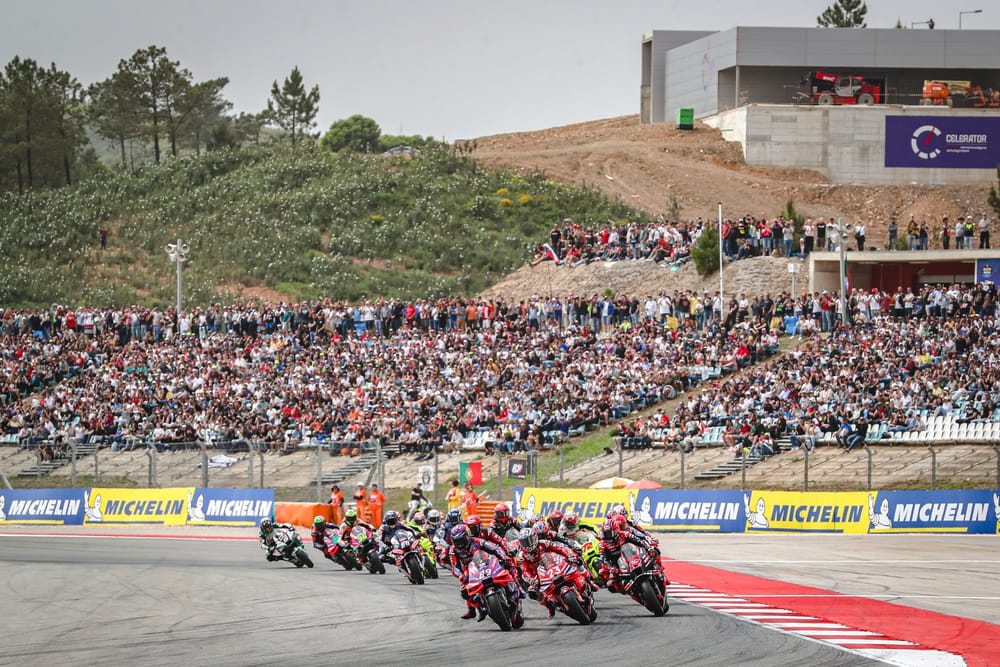With Formula 1 owner Liberty Media purchasing a controlling stake in MotoGP race promoter Dorna, there are interesting times ahead for the championship as the new owner looks to improve viewing figures and draw new fans into the series in return for its substantial investment.
We’ve got an idea now of what shape at least some of those plans will take, too, following an online presentation to investors and financial institutions where Liberty CEO Greg Maffei and Dorna boss Carmelo Ezpeleta laid out much of their ambitions for the direction in which they want to see MotoGP go.
There won’t be any street circuits

Not that it really needed to be heard by anyone who’s been paying attention to Dorna’s push for improved safety in recent years, but one of the things categorically ruled out is a move away from traditional venues and onto street circuits, despite that being a theme of Liberty's F1 tenure.
A push started under previous owner Bernie Ecclestone as F1 headed for city centre venues in places like Singapore (pictured above) and Baku and most recently with last year’s inaugural race in Las Vegas, it’s disliked by some fans who feel the narrow street tracks create worse racing - but while that wouldn't be an issue for bikes, the safety issue makes it a no brainer.
"It is worth noting that this cannot happen on street circuits,” Maffei made clear regarding MotoGP. “This will be a different experience.”
The big target market is the USA

It’ll come as no surprise whatsoever to anyone who’s both watched what Liberty has done in F1 or who pays attention to the global sports entertainment market, but Liberty's big push going forward is clearly going to be to expand MotoGP in the USA.
It’s something that Dorna has already been working hard at under its previous ownership, with the arrival of former NBA executive Dan Rossomondo as the new chief commercial officer last year in an attempt to push into a market where bike racing has never really managed to have a significant share.

Expect those attempts to be turbocharged in the future, with new American team Trackhouse Racing likely to be at the forefront of the push and with the very real possibility of further races in the US being added to the schedule soon, probably in lieu of some of the five currently held on the Iberian peninsula.
Riders are going to have to work harder

Good news for fans but bad news for the series’ riders is that under Liberty, they’re likely going to be expected to significantly step up their work off the motorcycle, both on race weekends and away from the track.
It's somewhere MotoGP has trailed behind F1 in particular. Riders are not currently expected to perform anywhere near the same amount of PR activities as their F1 counterparts.
It’s telling that Liberty has already highlighted a greater utilisation of MotoGP's talent pool as something it wants to implement very quickly, giving fans more chances to meet and interact with them.
There’s likely to be some griping from riders about it in the short term, but a few will realise the longer term potential here to elevate their own personal brands and hopefully become truly global superstars the way that even the back end of the F1 grid is these days.
MotoGP needs less work than F1

An interesting observation by Maffei was his belief that currently, Liberty has much less work to do in MotoGP than it did back in 2017 when it took over F1.
Part of that, of course, is because of Dorna’s efforts in past years to copy some of what the four-wheeled series have been experimenting with, with sprint races perhaps the most obvious example.
But Dorna has also built up a healthy brand even without doing what F1 does. An early innovator and market leader in social media (as opposed to the Ecclestone-era F1, which shunned it completely) and with a healthy portfolio of TV rights deals already in place, the series is in better health than F1 was a decade ago and growth should come quite easily.
Dorna’s current team will remain in place for now

While there might be new bosses at the top, a significant day to day change in how MotoGP operates is unlikely, thanks to Liberty retaining the currently existing structure headed up by CEO Carmelo Ezpeleta (pictured above) and his son and series sporting director Carlos.
That’s a very good thing for now, because while there might have been criticisms of the current leadership, most of that has been directed at their actions off the track rather than on it in terms of growing the series - and that’s exactly the area in which you’d expect the marketing and sales savviness of Liberty to take over instead.
With the leading MotoGP chiefs not just employees but part owners as well thanks to the 25% share of the business held by a group of Dorna employees, it’s likely that some of them have become substantially better off thanks to the sale of nearly half of those shares to Liberty in a deal likely worth nearly half a billion Euros.
We don’t know what’ll happen to Dorna’s other series

All of the attention in Monday’s presentation was firmly focused on MotoGP, with the only other Dorna property to even get a mention being, interestingly, 2024’s brand new Women’s World Championship, which will run alongside World Superbikes (pictured above) and was singled out as an example of Dorna’s aspirations to diversify both the grids and the fanbase.
However, WSBK - the premier production racing series - itself was barely mentioned. The same applied to the Moto2 and Moto3 classes (relegated in the official announcement of the deal to MotoGP ‘feeder series’).
They’ve already been somewhat sidelined in favour of MotoGP in recent years, and it doesn’t seem like that’ll change any time soon.



